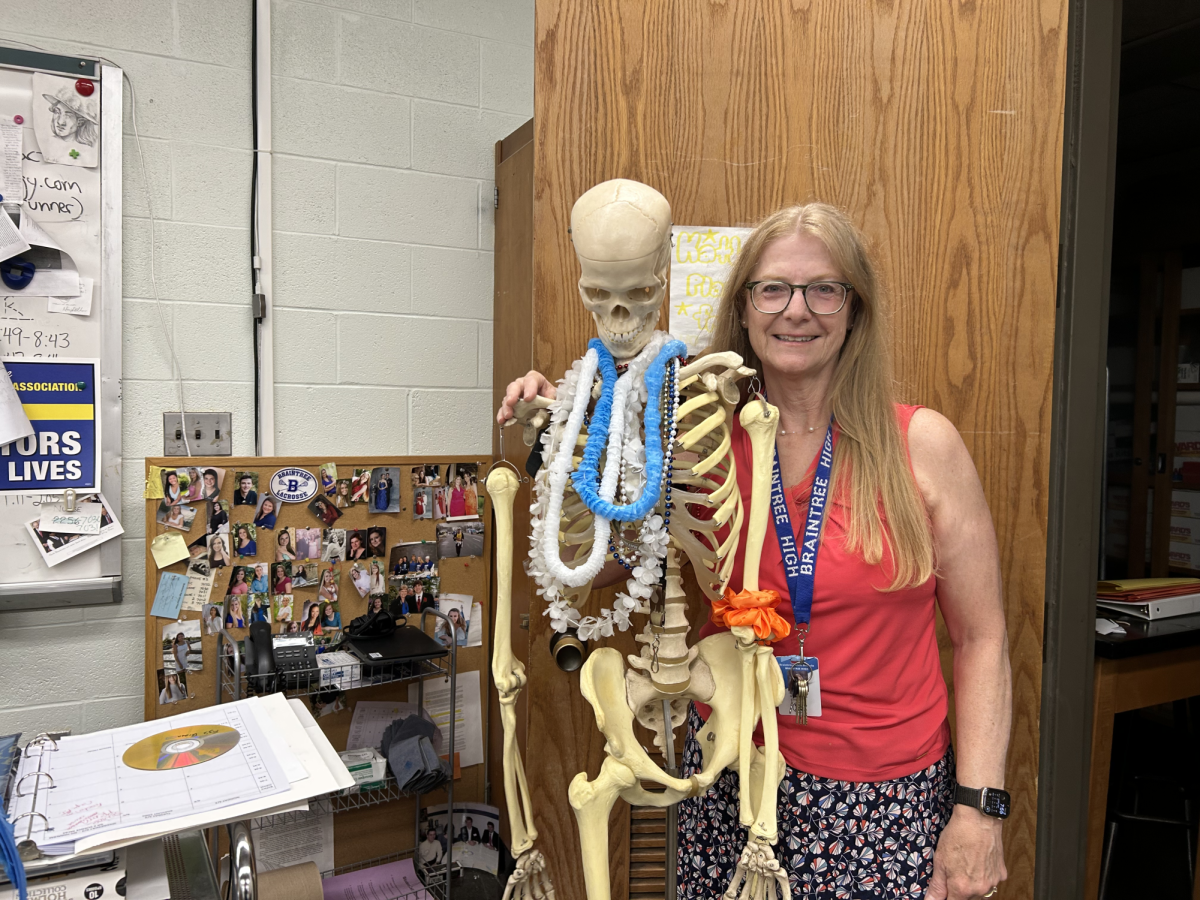Since the late 1800s, Electric vehicles have been in the works of humans minds, but hadn’t started to gain mass popularity until Toyota came out with the Prius in 1997: a Hybrid vehicle that utilizes electricity, but still has a gas storage system in case of battery depletion.
The world has been on push for full electric vehicles for years now. In a study by the International Energy Agency (IEA) they found that, “In the United States, new electric car registrations totalled 1.4 million in 2023, increasing by more than 40% compared to 2022.”
According to the Pew Research Center, There were over 61,000 publicly accessible electric vehicle (EV) charging stations in the United States as of February 2024.
At Braintree High School, EV Chargers were installed in the back parking lot several years ago. It was smooth sailing from then, until post-quarantine, when our chargers became outdated for newer models of electric vehicles.
“I parked right here, (the back parking lot) and then when they failed to upgrade the charging systems, which I thought was gonna be a day or a week” Says Braintree engineering teacher (and electric vehicle driver) Mr. Dembrow, “…When days turned into weeks, I learned through a group called DriveElectric that the chargers at town hall were still functional.”
Mr. Dembrow has been driving electric since 2018, purchasing a Chevy Volt to further save gas funds and make a difference in the world’s rapid change in climate. Dembrow drives to BHS from Fall River, which is 35-38 miles, and without traffic that’s 44 minutes
“So I’d come from home, charge my car, do my day, and drive back” Dembrow describes.
The commute was never a problem for the Braintree teaching veteran, working at the school for quite some time now. As the range of each car charge could perfectly get him to the high school without using any gas. While still being able to recharge the vehicle while working.
When the EV chargers became outdated though, the commute wasn’t as simple. Mr. Dembrow had to start parking at Braintree’s town hall instead, as they were the closest location with public chargers. Standing about 1.2 miles from the high school; approximately a 27 minute walk.
Mr. Dembrow explains, “I started to park my car over there and just walk in, and then to save time bought a bicycle to throw in the trunk of my car.”
Yes, the Braintree teacher purchased a brand new foldable bike to store in his car to make his daily commute to the high school. Even with Dembrow solving his current dilemma, it was never guaranteed he could fill his vehicle everyday.
“Sometimes you go over there and there’s no place to charge because the demand for charging stations is beginning to exceed the supply,” says Dembrow. The world is changing, and it’s moving faster than townships are able to keep up with and supply.
Though the electric chargers being outdated may hinder the Braintree engineering teachers commute, he is more concerned about what it says to students about the school’s priorities and the irony of it all.
“As a school teacher I feel like part of my role, especially teaching high school senior engineering students, were making a pretty major change to the way we use energy on the planet” Mr. Dembrow states, “It’s unfortunate that I come in here and talk about engineering in a place where we’re not thinking forward in terms of engineering.
Teachers aren’t alone on this boat either, there are students in the school who drive electric and similarly can’t give their vehicles a charge while doing their daily priorities at school.
Senior Ryan Kim explains how his family purchased a plan where he won’t have to worry about charging his vehicle outside of his home.
“The fact that charging is cheaper than getting gas here, we actually have a deal with BELD (Braintree Electric Light Department) where they give us a discount if we charge at night, so we basically pay next to nothing to fuel the car” Kim explains.
When asked specifically about the school chargers, Ryan states, “I don’t really use the chargers, well, I physically can’t…cause they’re broken” and “I feel like it should be an easy fix, it’s easier to update [the chargers] and the electrical system than completely get rid of them”
As of November 2024, the EV chargers desolately sit behind the school, covered by trash bags, ironically to protect them from rainfall or other weather implications and show that they are out of order.
Mr. Dembrow remarks, “For example, if a bathroom doest work, taping a garbage bag over the toilet and writing ‘out of order’ and then checking off your box saying ‘okay we’ve fixed this problem’ Well, no you really haven’t fixed the problem, you’ve just taken it off your list and now nobody can use the bathroom. To me that’s a perfect analogy for this, there’s a trash bag literally duct taped over the charging station.”
As much as the BHS veteran doesn’t mind altering his commute to charge his vehicle, his larger worry is how it looks to the students that the teachers are actively influencing to make a difference in the world.
“The part that bothers me is that students see that, and it’s not a good look”








Doug Perrenoud • Nov 18, 2024 at 1:53 pm
This story makes no sense.
First, the Toyota Prius (and ALL non-PHEV hybrid vehicles) REQUIRE gasoline to operate. The extra battery and electric motor/generator recovers energy usually lost through braking to assist the gas engine.
Second, a 2018 Chevy Bolt has a range of over 200 miles. There is no reason why the teacher cannot make the 76 mile round trip each day and charge overnight at home. Even if it was a Volt that he was driving, it has a gas engine with a 400+ mile range.
Jon Lutz • Nov 18, 2024 at 5:00 am
Quite a simple fix, really. There are dozens of available level 2 EVSE choices. Simply buy one of them and wire it to the existing wiring.
KB • Nov 17, 2024 at 2:06 pm
Well, it doesn’t look good. But it can be a teachable moment that things aren’t always going to be perfect in the real world.
And it could be a way to show students how to address problems like that, rather than just throwing in the towel and going elsewhere (in life, one may not always be able to easily go elsewhere, like a different charging station or a job)